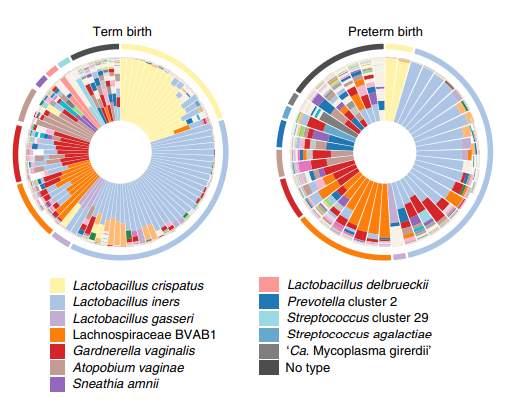Modeling Pregnancy
Predicting preterm birth
Vaginal microbiome composition in early pregnancy
Preterm birth (PTB) is the second-leading cause of neonatal mortality world-wide and the leading cause of infant mortality in middle- and high-income societies. In the United States alone the annual cost of PTB is greater than $26.2 billion. Effects of PTB can also have long-term impacts on the individual. The current prediction methods are limited to individual history of preterm birth, which is of little help to first-time mothers, or clinical observations throughout pregnancy. There is a need to develop models for the prediction of PTB in early stages of pregnancy to enable appropriate intervention and prophylaxis to reduce the risk of premature delivery.
The technology
Researchers at Virginia Commonwealth University have developed a model for PTB prediction based on the relative abundances of several bacterial taxa in the vaginal microbiome. Of 1572 pregnancies from the National Institutes of Health’s integrative Human Microbiome Project (iHMP) longitudinal study, analysis of vaginal samples from 45 women experiencing spontaneous PTB and 90 case-matched controls of predominantly African ancestry identified 12 bacterial taxa with significant associations to PTB. The presence of Lachnospiraceae BVAB1, Prevotella cluster 2, Sneathia amnii and Saccharibacteria TM7-H1 in particular, which are also correlated with vaginal dysbiosis and positively correlated with the incidence of PTB, make up the variables in this PTB prediction algorithm. The model shows promising sensitivity (77.4 %) and specificity (76.3 %), thereby providing a clinically relevant approach to predicting PTB early in pregnancy to permit medical intervention.

Figure 1. Vagitypes of 90 women who delivered at term (≥39 weeks of gestation), and 45 women who delivered prematurely (<37 weeks of gestation) showing 13 community states.
